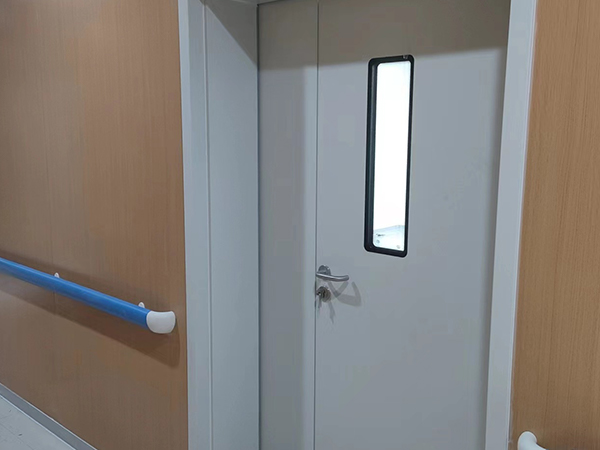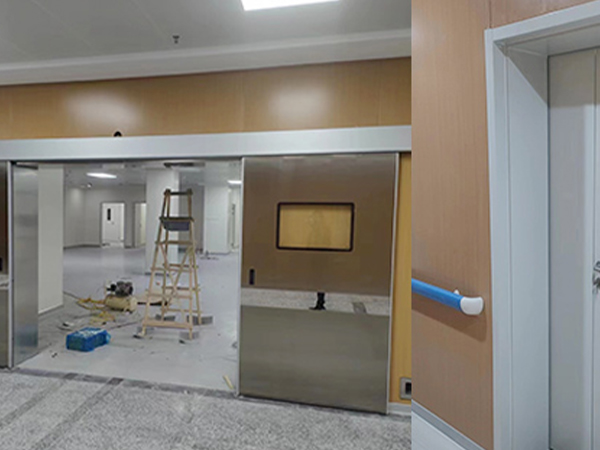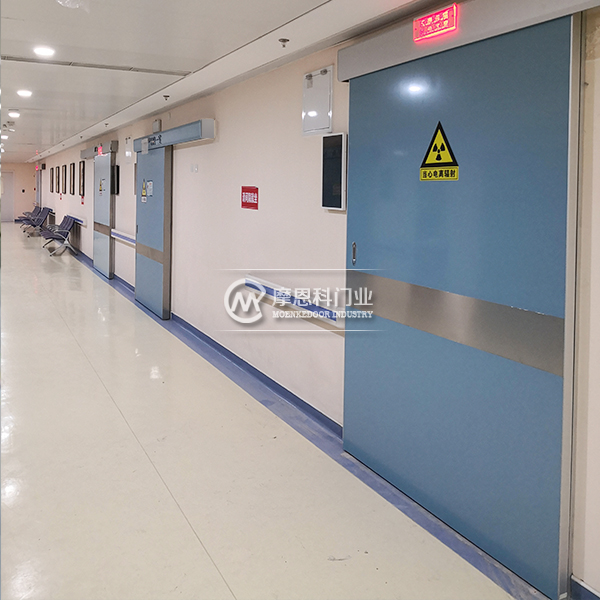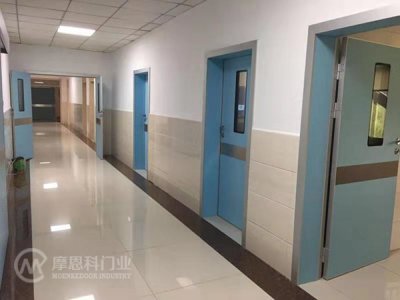Nowadays, medical doors have become an indispensable part of medical facilities, playing a crucial role in the spread of the epidemic. It not only has safety performance, but also plays an important role in preventing pollution and isolating disease sources. This article will introduce the relevant knowledge of medical doors, including materials, production processes, installation, and maintenance, hoping to be helpful to readers.

Material Science
The materials used in the production of medical doors are generally steel, aluminum alloy, PVC, etc. These materials have good protective properties, prevent the growth and reproduction of bacteria, and are essential materials for medical facilities.
1. Steel: Steel is one of the main materials for medical doors. It has high strength and toughness, and can withstand long-term use and cleaning. The surface of steel can be sprayed with anti-corrosion paint of different colors, making the appearance of medical doors more beautiful.
2. Aluminum alloy: Aluminum alloy is a lightweight and durable material widely used in the production of doors and windows in medical facilities. Its surface can be treated with oxidation to make it more resilient and durable.
3. PVC: PVC is a durable and stretchable material commonly used in the production of sealing strips for medical doors to prevent bacteria from entering, as well as to prevent contamination and its spread.
Production process
The production process of medical doors is very strict, and they must be produced strictly according to different standards to ensure that the medical doors leaving the factory comply with national and relevant industry standards.
1. Design: Firstly, it is necessary to design different medical doors according to the different requirements and needs of medical facilities, including door size, color, style, etc.
2. Production: According to the design drawings of the door, produce the door frame, door leaf, sealing strip and other components, and carry out welding, polishing and other process treatments to ensure that the various parts of the door meet the standard requirements.
3. Surface treatment: Polish, spray and other treatments are applied to the outer surface of the door body to make it smooth and even, and not easily contaminated with dust, bacteria, etc.
4. Installation: Install and debug the door body to ensure that the measured dimensions of each part of the door and the performance of the door meet the requirements.
Installation and maintenance
The installation and maintenance of medical doors are crucial, as they not only ensure the safety performance and service life of the doors, but also prevent malfunctions during use and affect the normal operation of medical facilities.
1. Installation: When installing medical doors, attention should be paid to the size and installation flatness of the door, ensuring that the door leaf can be completely closed and the sealing performance meets the requirements. At the same time, attention should be paid to the installation position and opening direction of the door.
2. Maintenance: Regular maintenance and inspection of medical doors, including cleaning and lubrication of door frames, door leaves, and other parts, checking for wear and damage to sealing strips, and replacing them in a timely manner.
3. Maintenance: During the daily use of medical doors, be careful not to hit the door body, do not hang heavy objects for a long time, and avoid damaging the service life of the door.

summary
Regarding the manufacturer of medical doors, I would like to recommend Shandong Moenke Door Industry Co., Ltd., which specializes in the production, sales, and installation of medical doors, automatic doors, access control systems, and radiation resistant doors. Survival through quality and development through reputation have always been the philosophy that Moenko Door Industry has adhered to for many years, and has won the trust and praise of its customers in the years of development.













